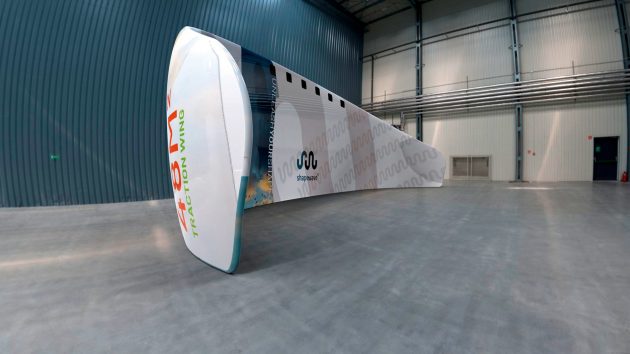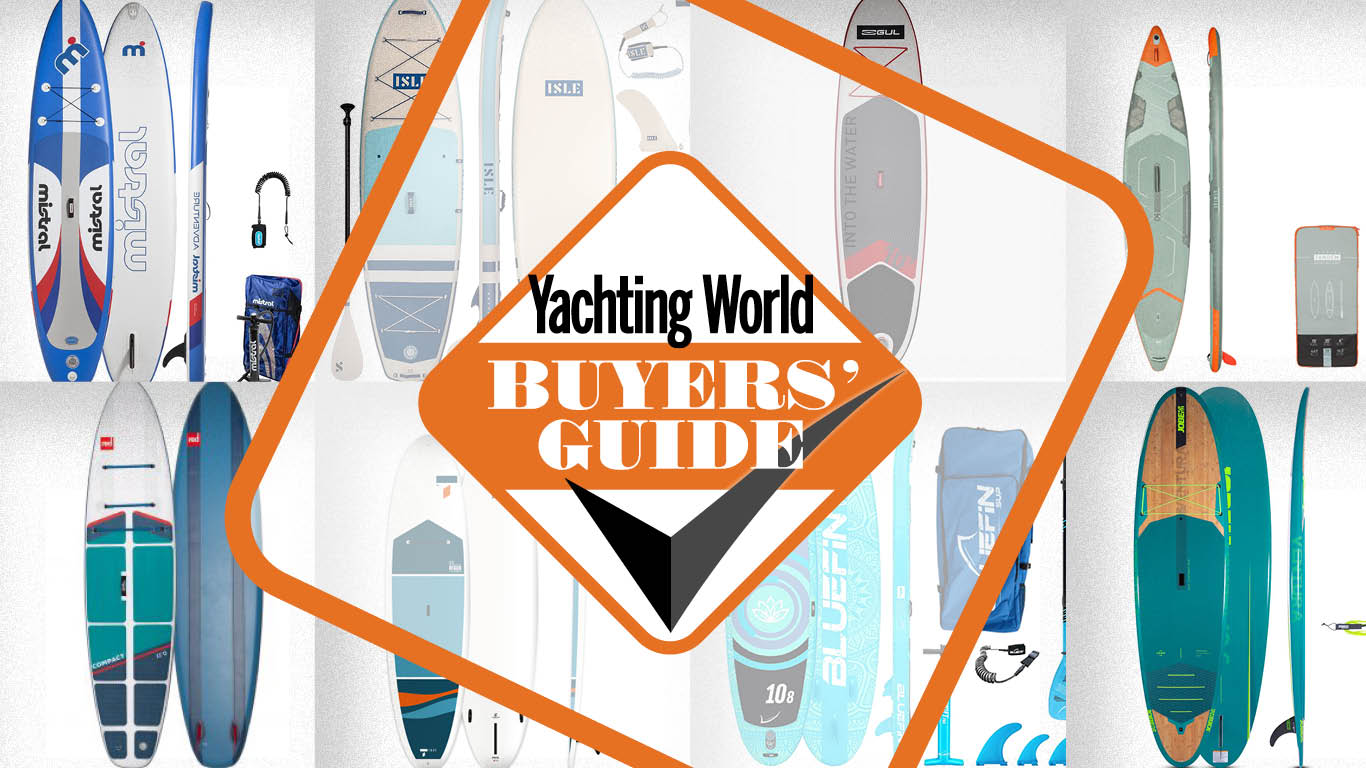New technology from Shapewave allows custom shapes and dynamic inflatable structures, and at half the weight of current drop stitch methods, which could lead to big changes in marine products, watersports and more
In 2007 we saw the first drop stitch-built inflatable paddleboards come on to the market, and since then paddleboarding’s popularity has skyrocketed. It’s estimated that around eight million people did some form of paddleboarding activity in the UK alone in 2021. Affordability and portability makes a SUP (stand-up paddleboard) one of the easiest entry points for people to get out on the water.
However, these inflatable platforms can lack the sophistication and performance of a hard board or rigid hull, to some extent limiting both what people can do with them and the design of new inflatable paddlesport equipment.
There is a general acceptance that a ‘proper’ shaped board, kayak or foil, has to be of a solid construction type, which brings other compromises such as needing extra storage space, a carrying method, and not being able to fly with them on holiday.
But things are about to change. New company Shapewave presented their innovative latest welded technology at the METS equipment show last November.
Shapewave co-founder Dominique Kwaks told us how robots have made it possible to create this new style of welded construction, which offers a dynamic three dimensional alternative to drop stitch construction, and could have a diverse application potential, particularly in the marine sector.
Shapewave’s second co-founder, Rudo Enserink, is a creative industrial designer who has worked in the marine industry for decades – including collaborating on the design of the Gunboat G4 – and took an interest in welded plastic construction due to frustration at lengthy existing construction processes and long lead times. He tried multiple ways to destroy some welded materials while in his office, and the seed was sown for a new way of welded construction.

Cutaway shows how the welded tapes create ties between the outer membranes
How it works
The patented CAD-to-weld tool chain which Shapewave is using to develop its product enables the welding of thousands of Thermoplastic Polyurethane tapes internally within two membranes in just a few hours, with high accuracy and precision. It calls this robot machine the ‘Shapewave wavemaker01’, which produces a patented Welded Tape Technology.
Shapewave is scaling up production by having multiple wavemaker machines in their factory and developing other style machines for other applications of the same technology, but on differing scales of size and complexity.
The weld head is designed to build each individual tape connection with a unique length as well as an angled weld line. Tapes can be closely spaced at approximately 10mm for smooth, detailed shapes and high pressure, or wider apart depending on desired construction weight and build time. With a pressure range of up to well over 1 bar (14PSI) yet maintaining a safety factor of over 5 bar (70PSI), the stiffness and smoothness you may know from inflatable SUPs are within reach.
Article continues below…
Best Inflatable Kayak and Canoe: Find The Model For You
I love my inflatable yacht tender, I use it a lot to get about in. But nothing quite matches the…
Best paddle board: Top SUPs for beginners and seasoned experts
Given its significant increase in popularity in recent years, stand-up paddle boarding (SUP) likely requires no introduction for those who…
The potential reduction in waste material is another big benefit over drop stitch. Drop stitch is created as long rolls of parallel PVC layers: lots of repeated shapes are then cut away with offcuts and trimmings going to landfill. It’s difficult to recycle these materials due to the construction process and mixed materials.
The Shapewave method essentially tailor-makes each object to a specific contour and shape, rather like 3D printing, which reduces wastage considerably and creates a unique and fully aquadynamic or aerodynamic range of shapes. However, it does require many machines lined up to produce an individual product.

Shapewave welded plastics technology could create a stiff, lightweight wingsail of complex shape
Shaping our watersports future
The applications for this technology are far reaching. The weight reduction of the tape welding method is huge, meaning that inflatable wings, such as wing sails, kites and other items that currently haven’t benefitted from drop stitch technology due to weight constraints can now join the inflatable evolution party.
Among the interested parties throwing their hat into the ring are SUP market leaders Red Paddle. “It could be massive,” Red founder John Hibbard told us, and for many reasons. The prime benefit he highlights is the lack of waste. As drop stitch is a PVC composite it’s almost impossible to recycle, he points out.
“Shapewave is a single piece, all made out of the same stuff (TPU), with no adhesives thanks to the welding system. So it can be repurposed, and for me that’s interesting.”

Robots are used to weld the thousands of polyurethane tapes between membranes
Hibbard thinks this welded tape tech will help produce a very compact efficient shaped board – “reduce size, reduce weight and therefore create better packability”. It’s a completely different way of thinking that takes inflatable manufacturing to the next level. But it might not be mass market for SUPs for some time, Hibbard reckons. It’s more expensive and therefore likely to be used on bespoke and specialist products at first.
The uses for internally welded dynamic shaped inflatable structures goes far beyond the leisure paddling and surfing market, however. Another exciting area Shapewave is looking at is renewable energy and the construction of wind turbine parts and inflatable solar panels. Meanwhile for the marine sector, potential applications include RIB hulls, wingsails, SUPs, kayaks, towables, foil boards, biminis, awnings, rescue and safety equipment.
We can expect to see Shapewave manufactured products making their way to market in late 2025.

Drop stitch uses thousands of fine, densely woven filaments between membranes
What is drop stitch?
The term drop stitch refers to the construction of two parallel panels of (usually) PVC strung together with (thousands of) fine polyester filaments, usually 50mm, 100mm or more in length. They’re densely woven, of equal length, between the two panels. Seal off the edges of the PVC panels and pump the area full of filaments with air, and the strands act in unison, preventing the PVC walls from bulging. This creates a rigid structure we can then shape into various slab forms to make paddleboards, kayaks, inflatable air decks in tenders and some portable mini docks or work platforms.
The good bits
The technology to create stiff responsive paddleboards has come along in the past 17 years and we now have inflatable boards designed for touring, yoga, general paddling etc. The inflatable kayak market has also benefitted from the drop stitch boom, though there’s still a lot of inflatable kayaks using tubular chambers. Those that do use drop stitch have a very distinctive look with angular slab sides and flat hulls.
Yes they’re rigid and don’t flex much, but they lack the aqua-dynamic shape or performance of a rigid kayak or canoe.

A disadvantage of drop stitch is that shapes have to be rather slab-sided… and multiple layers make it quite heavy
The not so good bits
The problem, if we can call it a problem, is that drop stitch doesn’t allow for fluctuations in thickness. They are parallel slabs, welded to form a blocky shape. So it’s not possible to make a surfboard with decent rails to catch a line with drop stitch construction.
It’s not really possible to create that V-shaped hull for a decent kayak or canoe that tracks without the need for fins either. Wing shapes? You can forget that sort of thing too! Drop stitch is quite heavy and the manufacturing process can be wasteful and non-recyclable.
 If you enjoyed this….
If you enjoyed this….
Yachting World is the world’s leading magazine for bluewater cruisers and offshore sailors. Every month we have inspirational adventures and practical features to help you realise your sailing dreams.Build your knowledge with a subscription delivered to your door. See our latest offers and save at least 30% off the cover price.






